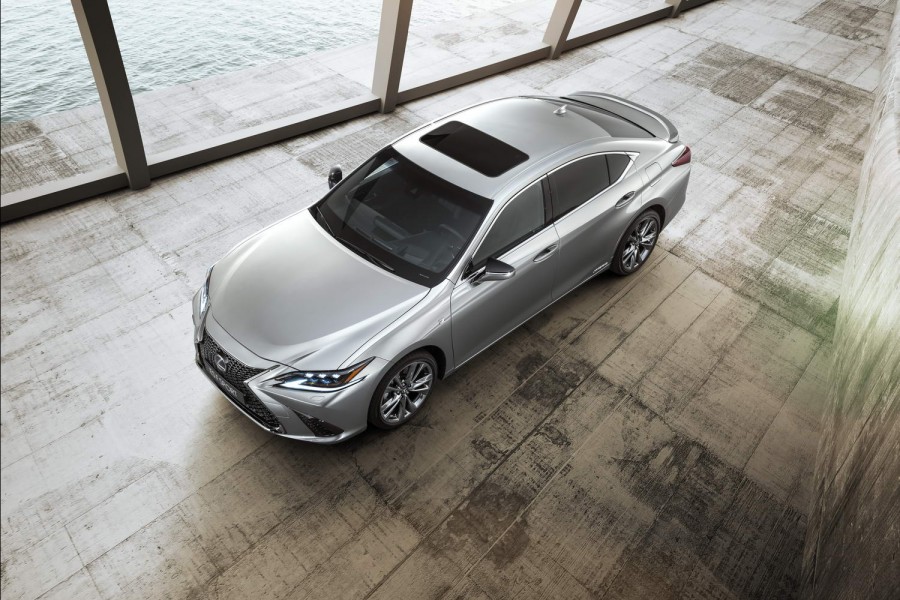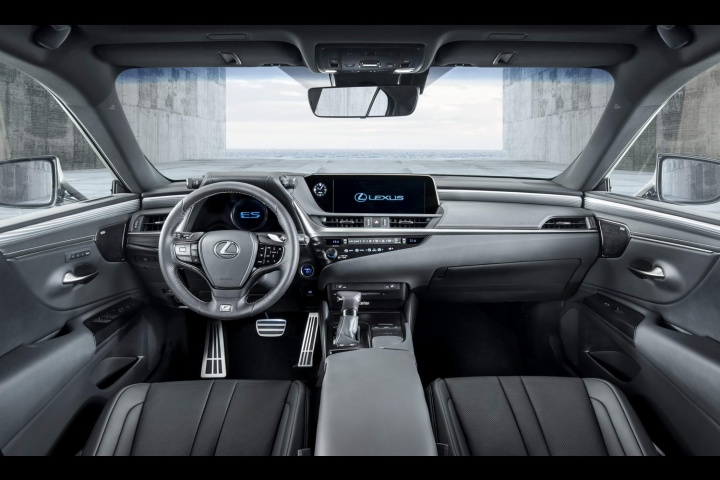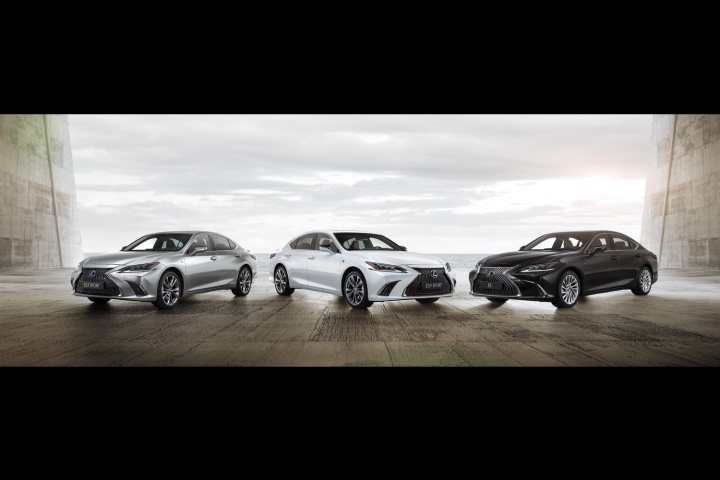What's the news?
Lexus has revealed more details on its BMW 5 Series challenger, the GS-replacing ES saloon.
Following on from our first peek recently, we already know that the ES will be built on an all-new platform and that it will most likely feature an entirely hybrid line-up of drivetrains - this being the fourth generation of the Toyota/Lexus group's Hybrid Drive System, which is said to 'eliminate the rubber-band feeling associated with previous hybrid systems.'
So now it's time to look at other areas of the car in greater detail.
Exterior
The Lexus ES, sitting on the Global Architecture - K (GA-K) platform, is 65mm longer, 45mm wider and 5mm lower than the fourth-gen GS it replaces. The wheels are pushed to the corners, stretching the wheelbase by 50mm, while the front and rear tracks are wider by 10- and 37mm respectively. That should lead to greater interior space, but it also gives the ES a rakish appearance, emphasised by the low bonnet, vertical-barred grille and sloping roofline; at the rear are LED wraparound light clusters and in the arches reside alloys of either 17 or 18 inches in diameter. Chief designer Yasuo Kajino described the look of the ES as 'provocative elegance' and added: "The ES has always been an elegant luxury sedan. For this generation, we have added daring design elements that challenge the traditional expectations of buyers."
Interior
Lexus says the ES builds on its predecessors' reputation for 'unparalleled comfort, refinement and luxury by delivering more space, a quieter cabin, class-leading safety technologies and supreme craftsmanship.' If you want that in shorthand marketing speak, the ES previews 'the future of Lexus cabins.' That means a driver-centric layout, with the centre display screen, instrument panel and head-up display presented in a tight cluster in the driver's field of view. Lexus says the angle and position of the steering wheel, and the angle and location of the brake pedal both combine to provide a more natural driving position. And rear-seat passengers are not forgotten, as a lower hip point and sculpted headliner ensure that headroom remains the same as before, despite the exterior roofline, while there's lots of legroom, thanks to the longer wheelbase.
Mechanicals
As reported the other day, the ES's platform is indeed front-wheel drive - marking a departure from the rear-driven GS. But don't despair: the aim of the team developing the ES was to make it as engaging to steer as possible. To that end, the chassis is 'exceptionally rigid' and made of high-tensile steel, while the rear suspension is an all-new multilink design. Rack-mounted electric power steering and a V-brace behind the rear seats aim to make the car taut in the corners, while it also has a lower centre-of-gravity and improved aerodynamics compared to the outgoing GS.
Just one model is confirmed for now, the ES 300h. It teams a 2.5-litre Atkinson cycle four-cylinder petrol engine to a lighter, more compact and more power-dense electric motor, plus self-charging hybrid system. That results in 208hp and fuel consumption that beats 6.0 litres/100km (47.1mpg) on the combined cycle. Perhaps the better news, though, is that Lexus claims the more sophisticated hybrid system control computer is 'better able to mimic the feel and power delivery of a standard petrol engine.' That should mean less of the CVT issues we often find with Toyota and Lexus hybrids.
Anything else?
Like any ultra-modern car, the Lexus ES will have a long list of safety equipment - such as the Lexus Safety System + 2.0, which incorporates pre-collision warning (with vehicle, pedestrian and cyclist detection in the day, and improved pedestrian detection at night), two-stage adaptive high-beam with 24 individual LEDs, and more.


